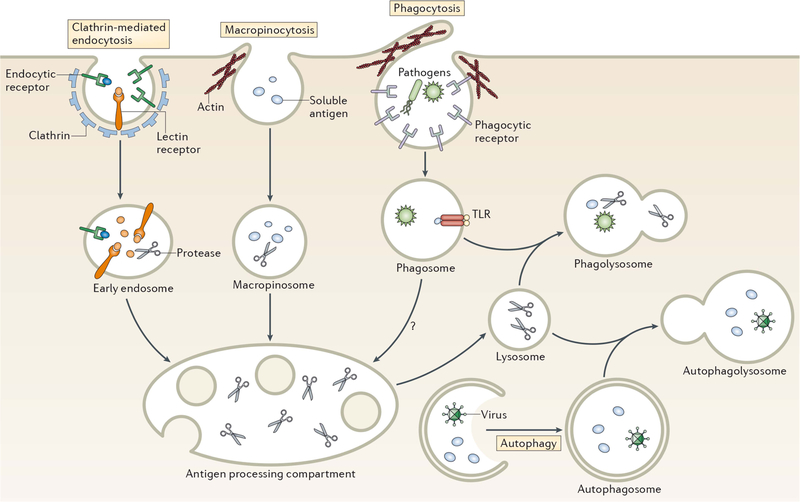FIGURE 4.
Pathways of antigen entry into the processing compartments of myeloid cells. Pathogens as well as soluble and particulate antigens access the endolysosomal pathway of antigen-processing cells by a variety of mechanisms. Clathrin-mediated endocytosis generally involves the binding of ligands to one of a variety of endocytic receptors that deliver endocytosed cargo to early endosomes. Macropinocytosis is a nonspecific form of endocytosis that involves actin-dependent membrane ruffling that leads to solute encapsulation in structures that give rise to macropinosomes. Like early endosomes, macropinosomes are not highly proteolytic and antigen degradation only occurs following their fusion with acidic late endosomal/lysosomal compartments containing lysosomal proteinases. Pathogens and large particles that possess specific binding sites for surface receptors are internalized by phagocytosis, an endocytic process that combines the features of macropinocytosis and receptor-mediated endocytosis. Phagosomes are not acidic nor proteinase rich; however, maturation of phagosomes by fusion with late endosomes or lysosomes gives rise to proteolytic phagolysosomes that degrade phagocytosed material. Autophagy also provides material for endolysosomal degradation by sequestering cytosol into a double-membrane encapsulated autophagosome that, like a conventional phagosome, undergoes maturation upon fusion with lysosomes to generate proteolytic autophagolysosomes. Reprinted from reference 103, with permission.

